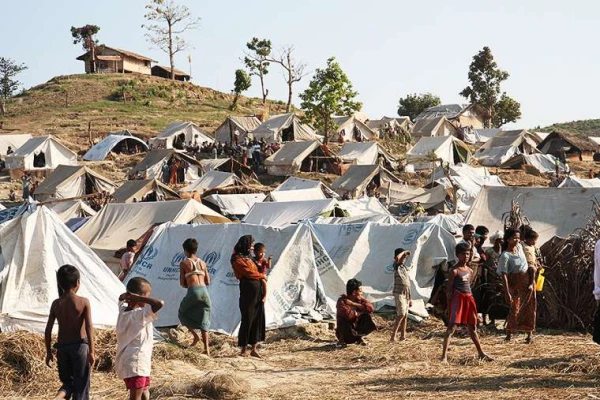
Dhaka, Bangladesh, Mar 27, 2020 / 04:11 pm (CNA).- There are nearly 700,000 refugees living in close quarters in the world’s largest refugee settlements in Bangladesh, making them vulnerable as the coronavirus (COVID-19) pandemic spreads.
Caroline Brennan, Catholc Relief Services’ emergency communications director, told CNA that in areas where CRS is serving refugees, such as in Bangladesh, they are adapting their programs as quickly as possible so they are still relevant and safe during the pandemic.
“In this case, when we’re looking at a virus like the coronavirus…there is such a heightened vulnerability in these settlements, where you have very large populations in extremely congested environments, and where multi-generational family members are living in really tight quarters,” Bennan said.
Many countries have adopted stay-at-home orders and strict social distancing measures in response to the virus. For the Rohingya refugee population in Bangladesh, Brennan said, and in many other areas where refugees are, it can be almost impossible for people to distance themselves from others in this way.
There may be up to ten people living in a small space with nowhere else to go, she said, which means access to safe space is a problem, as well as access to the means for refugees to keep clean.
In addition, Bangladeshi authorities fear that the coming cyclone season will cause sewage to overflow into flimsy shelters and possibly spread the coronavirus, the New York Times reported this week.
Brennan said CRS, along with local partners, has been providing hygiene and sanitation supplies to the camps, as well as training and materials for local health institutions.
One of the biggest priorities, Brennan said, is simply communicating information about how to protect oneself from the virus, but doing so in the camps in a safe way.
“Obviously, we don’t want to bring people together in large groups,” she said.
“And often times, that’s how you conduct programming— bringing people together for a training or bringing children together in a classroom.”
CRS has had to adapt to using large posters, printed in several languages, to get the word out rather than gathering people in groups to convey information about how to keep themselves safe from the virus, Brennan said.
Food in the refugee camps is often distributed in large groups, too, she said. CRS has adapted by doing more food distributions, but with smaller numbers of people, spread further apart, and with handwashing stations provided to lessen the chance of infection.
In some areas, refugees have regarded humanitarian workers with suspicion as possible carriers of the disease. Brennan said she is grateful that CRS has been present in many refugee areas for a while, which helps to build trust and allows CRS to communicate more effectively.
“We can convey information which can be received with credibility, and that’s crucial,” she said.
If you value the news and views Catholic World Report provides, please consider donating to support our efforts. Your contribution will help us continue to make CWR available to all readers worldwide for free, without a subscription. Thank you for your generosity!
Click here for more information on donating to CWR. Click here to sign up for our newsletter.




Leave a Reply